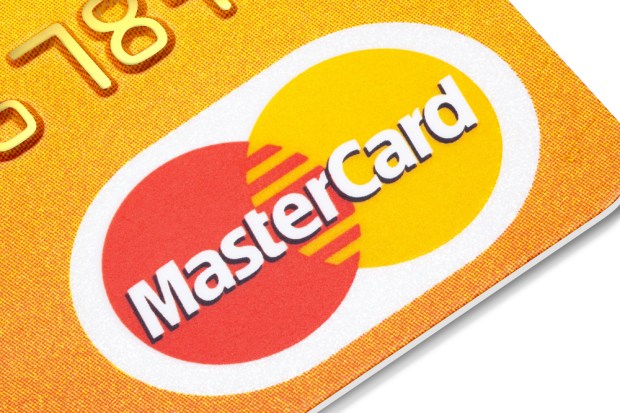Mastercard’s 3Q Shows Masterful Masterpass

In the latest earnings report showing that consumers are still happy to use their cards and spend (election be darned), Mastercard’s latest results were above the Street. And, nicely so, as the payments processor said Friday that its third quarter earnings grew by 21 percent, buoyed by growth in transactions processed.
The firm reported earnings per share of $1.08 on revenues that were up 14 percent in the third quarter, at nearly $2.9 billion. That handily beat Street projections that the firm would earn 98 cents on the bottom line, and top line estimates of $2.7 billion.
Mastercard’s transactions grew by by 18 percent year over year, with the tailwind of a surge in cross border activity, up 12 percent over the same period.
In international activity as measured by volume, Mastercard said that worldwide activity (outside the US) was up 5.7 percent. Within that subset, Latin America volumes were up 7.5 percent, Canada was up 9.8 percent, and APMEA was up 8.8 percent. Globally the card tally stood at the end of the latest quarter at 2.3 billion Mastercard and Maestro branded cards out in the field, up six percent year over year.
How fares the global economy? About the same as had been seen last quarter, according to CEO Ajay Banga, who noted that the US is holding relatively steady (as evidenced by the latest GDP numbers) and many markets across Europe are seeing some rebounds, led by Germany, even as Brexit looms large with uncertainty. Asia remains mixed, said the CEO, with China seeing imports and exports down sharply.
Beyond the macro, and drilling down to company specifics, Banga said that the acquisition of Vocalink proceeds as planned, with the first hurdle crossed, with the ball now in the UK’s court post EU review. Thus the deal is expected to close by sometime in mid 2017. Separately, Mastercard noted that the ongoing merchant litigation is still wending its way through the courts, with arguments having been heard in New York; Banga said he expects the settlement negotiations to resume, but to drag out over a period of years.
Turning to digital initiatives, the CEO noted that Masterpass continues to evolve on “two parallel paths.” One is the “digital by default strategy” through which issuers are able to auto enroll cardholders through their banking applications, a process that Banga said “drives scale for us.” As part of that strategy, 80 million accounts will be enabled over the next several months, said the executive. The second leg of the digital strategy ties in with enabling digital payments across all devices and channels, via app or in store. In one use case, Banga said that in South Africa, Masterpass is being used in conjunction with two telecom providers in that country, MTN and Vodacom. Those two carriers reach 70 percent of customers in the country and those users are able to use Masterpass to pay for air time via mobile device, rather than stand in line at an ATM or a physical store. Banga said that distribution costs have been reduced for those twin mobile operators on the order of 15 percent.
All in, said management on the call, Masterpass has 300,000 merchants onboard, with six million locations in 77 countries globally. Later in the call, Banga said that Masterpass exists not as a B2C effort but as a B2B effort. “What I am doing is not just building wallets,” Banga told analysts, “because a bank could have their own wallet, a merchant could have their wallet…they could take a wallet from us private-label to open APIs, that doesn’t matter. It all comes through in a safe secure way using tokens, some through a Masterpass acceptance mark….I would see Masterpass not as a wallet, that’s just for the long time,” he added. “I see Masterpass as a digital strategy and as a future brand for the company. I see the Masterpass system as an acceptance system that enables safe secure payments.”
Among newer initiatives, said Banga, during a question and answer session with analysts, B2B transactions and the commercial space overall “continue to be an area of pretty good growth,” with interest and adoption across virtual cards.
